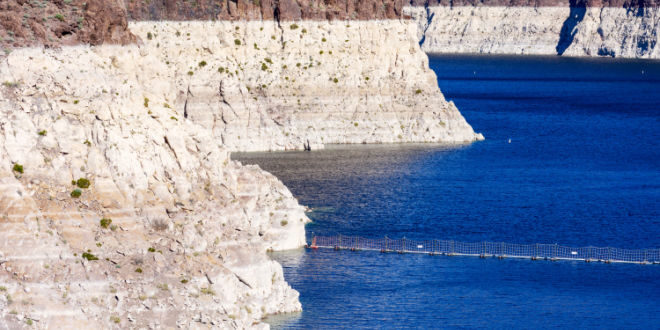The Bureau of Reclamation announced last week they would be easing water cuts on the Colorado River next year thanks to a very wet winter.
Feds released the Colorado River Basin August 2023 24-Month Study on August 15, which determines the tiers for the coordinated operation of Lake Powell and Lake Mead for 2024. According to projections in the study, Lake Powell will operate in a Mid-Elevation Release Tier and Lake Mead will operate in a Level 1 Shortage Condition.
Bountiful snowfall and rain pulled much of the region out of drought and raised water levels at the reservoirs, though not enough to avoid mandatory reductions altogether.
“The above-average precipitation this year was a welcome relief, and coupled with our hard work for system conservation, we have the time to focus on the long-term sustainability solutions needed in the Colorado River Basin. However, Lake Powell and Lake Mead – the two largest reservoirs in the United States and the two largest storage units in the Colorado River system – remain at historically low levels,” said Reclamation Commissioner Camille Calimlim Touton.
The required shortage reductions and water savings contributions under the 2007 Colorado River Interim Guidelines for Lower Basin Shortages and Coordinated Operations of Lake Powell and Lake Mead, 2019 Lower Basin Drought Contingency Plan and Minute 323 to the 1944 Water Treaty with Mexico are:
- Arizona: 512,000 acre-feet, which is approximately 18% of the state’s annual apportionment.
- Nevada: 21,000 acre-feet, which is 7% of the state’s annual apportionment.
- Mexico: 80,000 acre-feet, which is approximately 5% of the country’s annual allotment.
In addition to several agreements that have already been finalized, a consensus-based proposal – agreed upon by the three Lower Basin states earlier this year – commits to measures to conserve at least 3 million-acre-feet of system water through the end of 2026, when the current operating guidelines are set to expire.
 California Water News Daily Your Source For Water News in California
California Water News Daily Your Source For Water News in California


